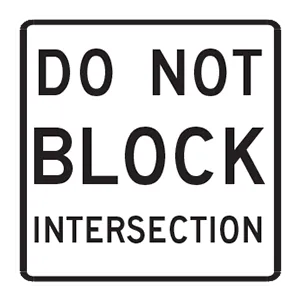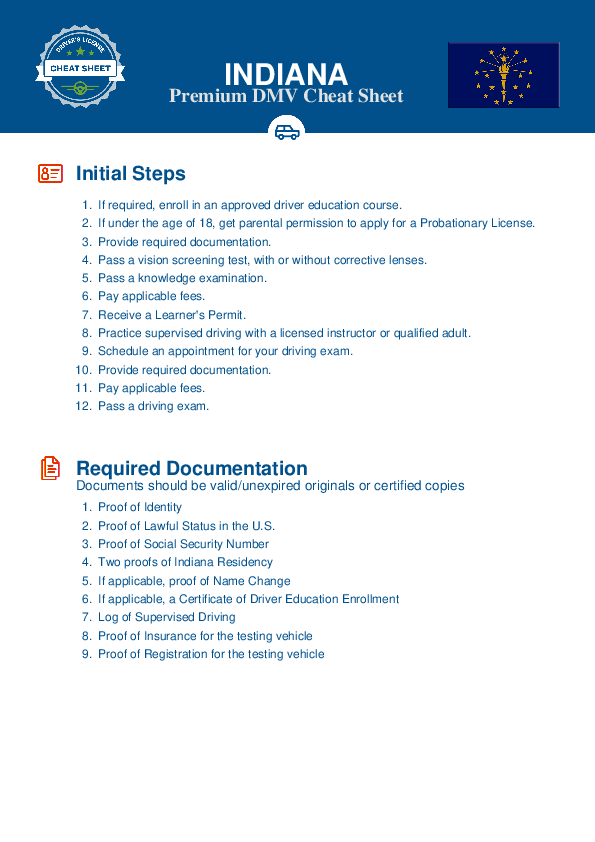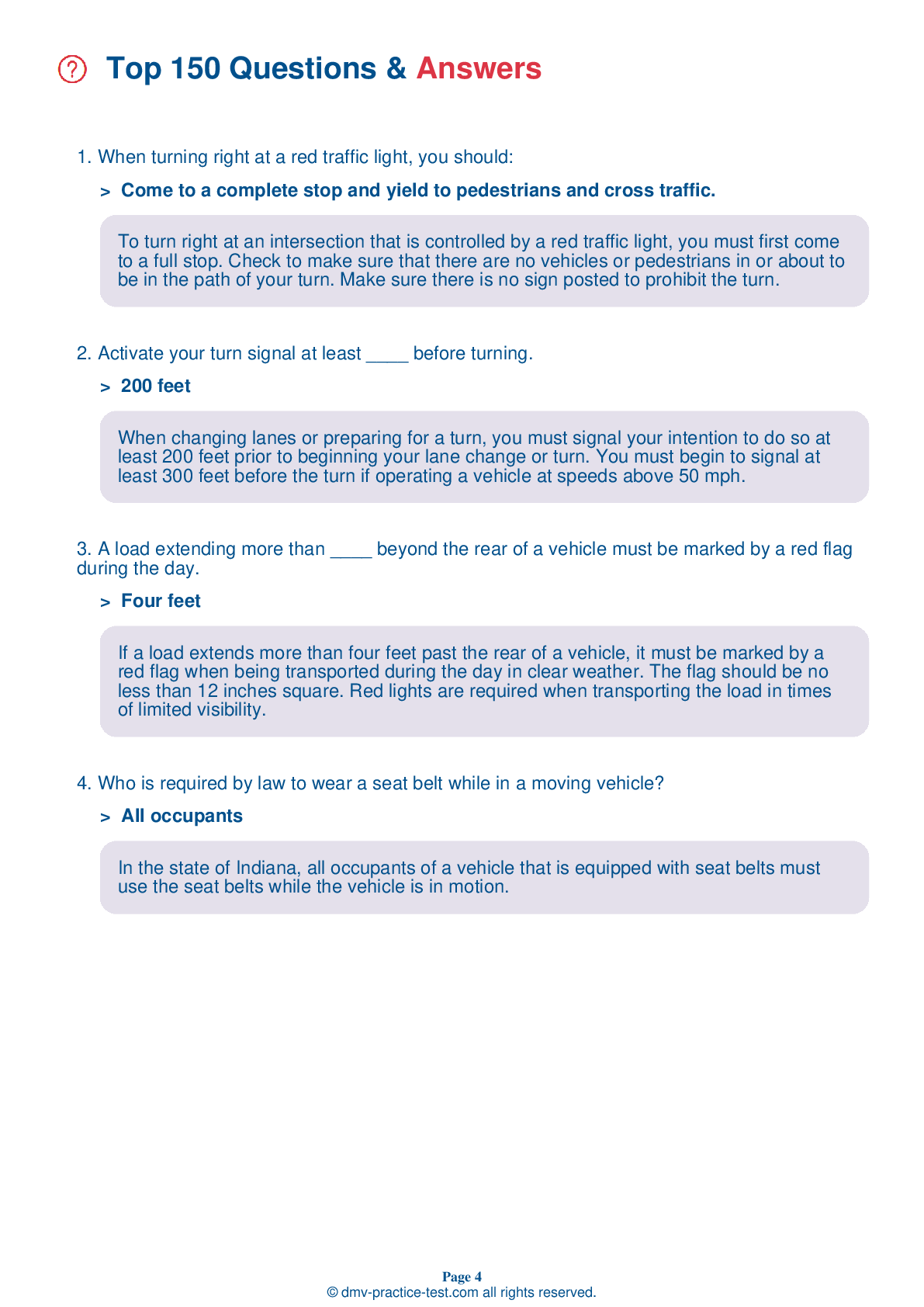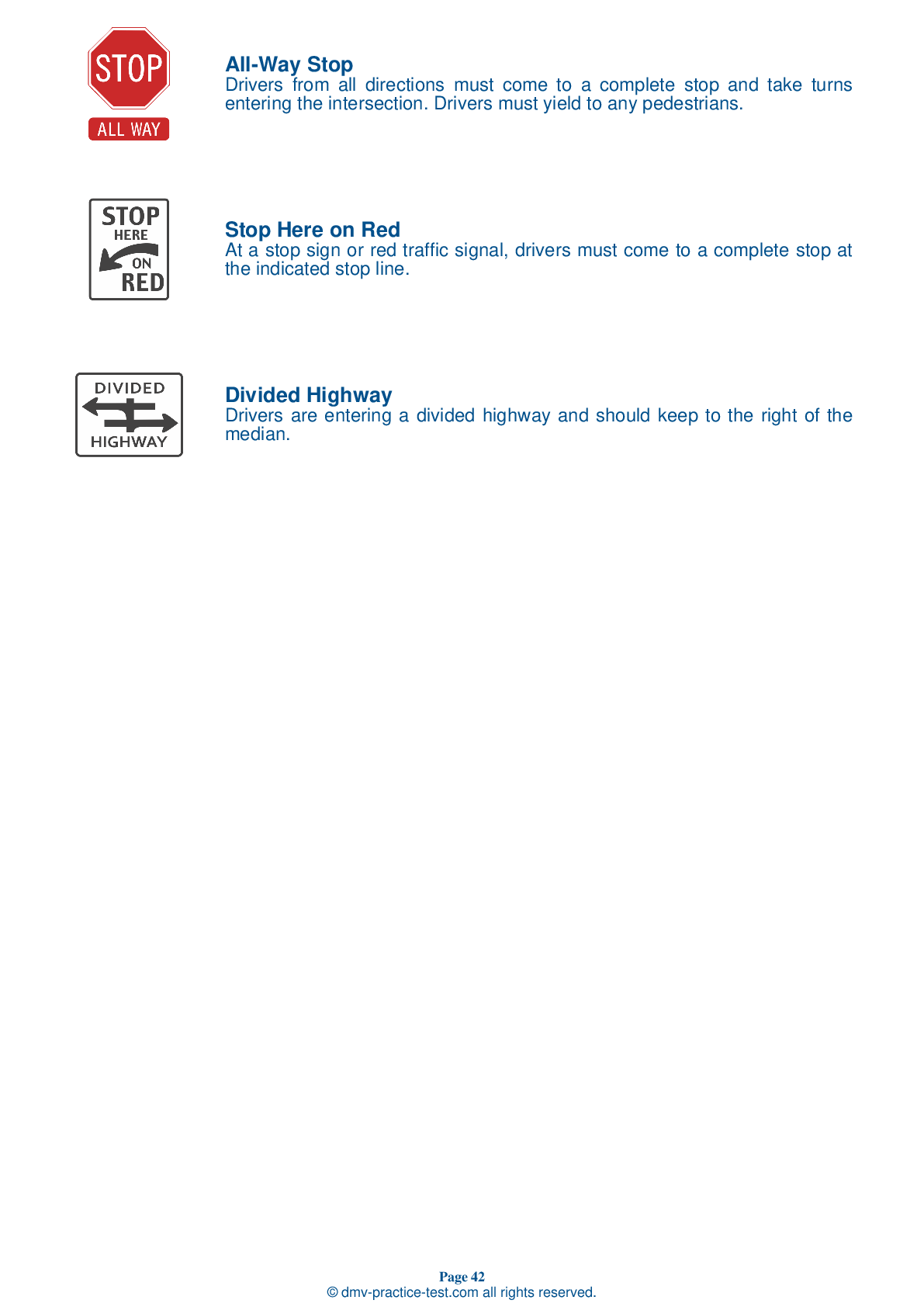FREE Indiana DMV Practical Test Page 3 of 5
This set of Indiana DMV practise tests include questions based on the Indiana Driver Handbook's most significant traffic signals and laws. Use actual questions that are very similar (often identical!) to the DMV driving permit test and driver's licence exam to study for the DMV driving permit test and driver's licence exam.
A driver's licence or learner's permit is necessary for anyone operating a motor vehicle on Indiana's public streets and roads. All applicants for an Indiana driver's licence or learner's permit must pass a vision screening test. The information about the IN BMV written test comes from the Indiana Driver's Manual. You must be able to read and understand regulation, warning, and traffic signs and signals, as well as demonstrate a basic awareness of Indiana road rules, traffic laws, and safe driving practises in order to pass the knowledge test.
There are 50 questions in the BMV written exam. You are permitted to miss 2 of the 16 questions about traffic signs and 6 of the 34 questions about road laws in order to pass the test.
Using any kind of testing assistance will result in an automatic fail, and the DMV may take additional action against your driver's licence, so stay away from it.
17 . This sign shows one type of:
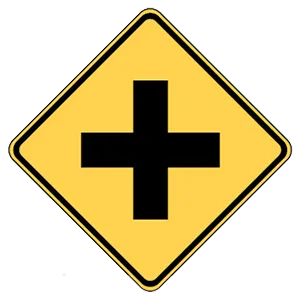
This sign indicates that an intersection with a crossing road is ahead.
18 . ____ greatly increase stopping distances and severity of crashes.
High speeds greatly increase stopping distances and severity of crashes. The faster you drive, the greater the impact or striking power of your vehicle, should you be involved in a collision.
19 . Work zone signs mean:
Work zone signs are orange and indicate that some type of work is being performed on or alongside the roadway. Be extremely careful when you see these signs.
20 . You are making a left turn from a two-way street onto a one-way street. When you have completed the turn, your car should be:
If you are turning left from a two-way street onto a one-way street, you should complete the turn into the lane closest to the lane you have just left.
21 . This sign means:
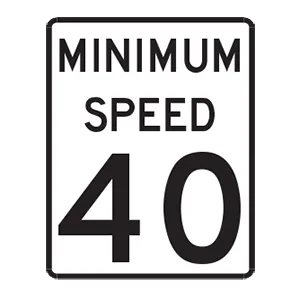
Regulation signs regulate traffic speed and movement, displaying rules which drivers must obey. This sign indicates a minimum legal driving speed and drivers should not drive below the speed posted.
22 . You are driving at night and another vehicle is approaching from the opposite direction. Your headlights:
Do not use your high beam headlights when approaching or following another vehicle at night. Switch to the low beam setting to ensure the safety of everyone on the road.
23 . You approach an emergency vehicle that is stopped with its lights flashing. You must:
If you approach an emergency vehicle, tow truck, or roadside assistance vehicle that is stopped with its lights flashing, you must change lanes to allow the vehicle extra space. If there is only one lane moving in your direction, or if changing lanes would be unsafe, you must slow down to a speed below the posted speed limit and give the stationary vehicle as much room as possible. Always slow down and be prepared to stop when you approach an emergency scene.
24 . This sign means:
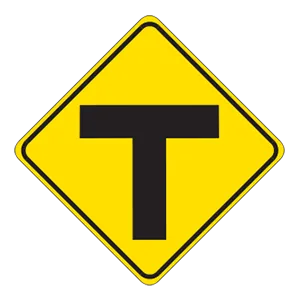
Warning signs prepare drivers for upcoming road conditions and hazards and are usually yellow with black markings. This sign warns drivers that they are approaching a T intersection and should prepare to turn either right or left.
25 . Signs that are colored orange are:
Highway work zones are established according to the type of work underway along the roadway. Signs in work areas are typically diamond-shaped, orange, have black letters or symbols, and serve as a warning that people are working on or near the highway.
26 . A driver entering public traffic from a driveway or private road:
If you are entering traffic from a driveway or private road, you should yield to drivers already on the public road. Merge safely into traffic when you are able to do so.
27 . This sign means:
